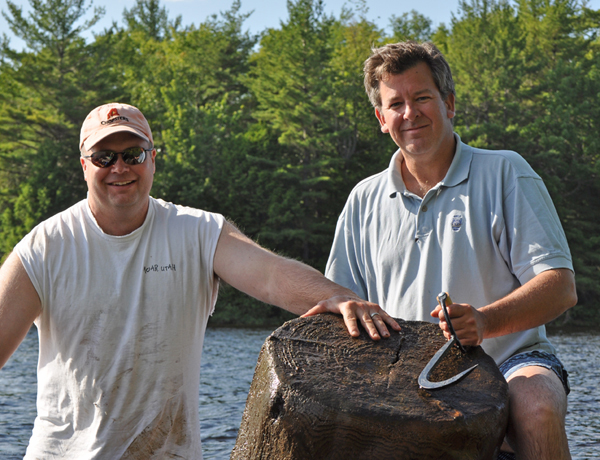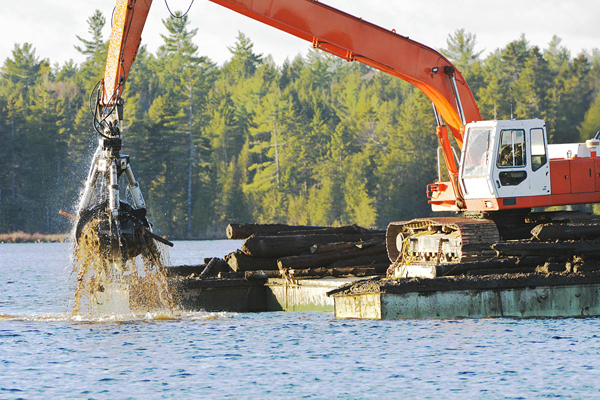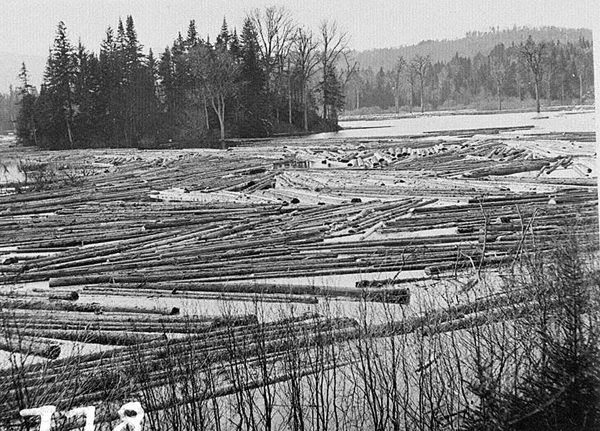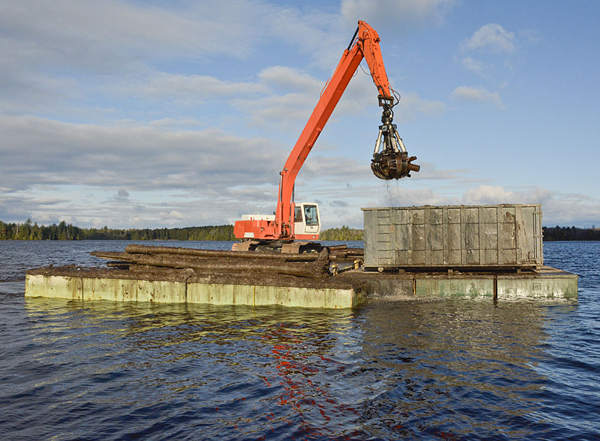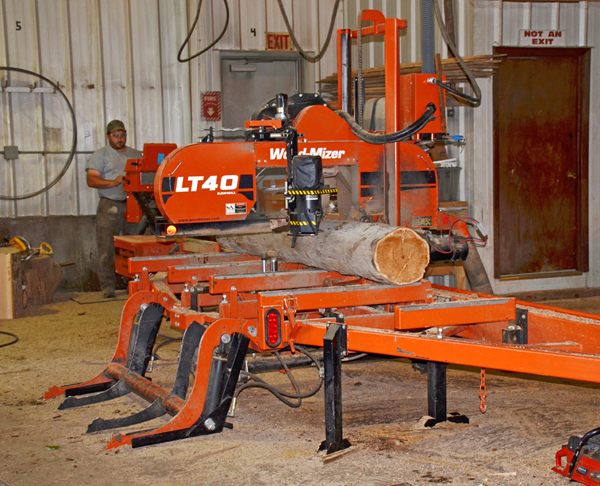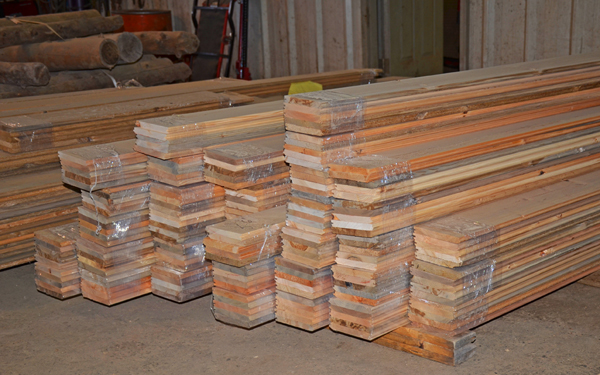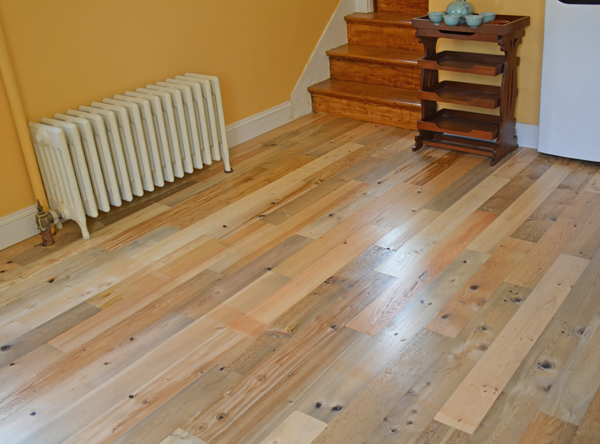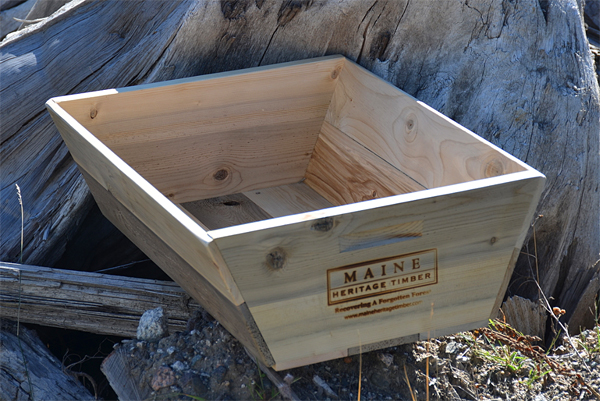
Before trucks and trains transformed the lumber shipping industry in America, logs headed to the sawmill often were floated down rivers to their destinations. Vast quantities made the voyage by remaining buoyant, but those that didn’t float ended up at the bottom of their river systems and were lost. Today, much of that sunken timber remains, and there’s a value to “sinker” logs for those who are enterprising enough to retrieve them. Cold water and low oxygen levels can preserve this often old-growth wood for centuries.
That’s where Tom Shafer and his business partner, Steve Sanders, come into the picture. The two Mainers saw the potential value of sinker timber at the bottom of Quakish Lake, which is part of the west branch of the Penobscot River system in eastern Maine. In 2009, they founded Maine Heritage Timber (MHT), a company that now manufactures reclaimed wood flooring, wainscot, countertops, furniture and other wooden accessories — all from logs retrieved from an otherwise watery grave.
“When I first went out on Quakish Lake and looked down and saw all those logs, I clearly got wood fever!” admits Shafer. He’d spent his first career as a market maker on the New York Stock Exchange, but the trading and financial industry had lost its luster. Tom wanted to make a “complete change” away from ticker tapes and into manufacturing.
Sanders’s background, on the other hand, was in building and construction in the Millinocket, Maine, area, where both men have their family roots. He also had experience as a woodcutter.
Aside from the opportunity to make a profit, the two cofounders also realized they could help stimulate the local Millinocket economy by hiring workers who had lost their jobs in shuttered sawmills. In the six years Maine Heritage Timber has been in business, the company has done just that. It has grown its payroll to 15 employees who handle all aspects of the operation — from log extraction and initial processing to sawmill operation and woodworking. The only aspect of turning logs to lumber that MHT doesn’t do on its own is kiln drying.
There are other companies involved in river reclamation projects, too, Shafer says, but none to the scale or capacity of MHT. The company can rescue 90 cords of river-reclaimed logs a day, he estimates, and they’ve already pulled up about 40,000 cords from the lake bottom. But there are far more logs to go. Some speculate there may be hundreds of thousands of cords remaining in the lake, but Shafer thinks those estimates are aggressive. Still, “We’ve only scratched the surface as far as taking wood out … we will be here for years to come.”
Most of the logs Maine Heritage Timber retrieves are softwood varieties: spruce, fir, pine and hemlock. Those were originally felled to help feed the Great Northern Paper Company, which was formed in 1899 and used the lake as a storage area for millions of cords. But, sometimes, hardwood logs of maple, oak and yellow birch come up from the bottom, too. Those had no commercial value for paper production but likely were clear-cut when the paper mill expanded the lake in preparation for a hydroelectric dam.
Lumber commerce in this part of Maine was active even outside of paper manufacturing. “The west branch of the Penobscot was the ‘I-95’ corridor for wood from the 1790s until after the Civil War,” Shafter recounts. “Bangor, Maine, was the sawmill capital of the East, as they sawed 45 million feet a year for many, many years.”
Woodcutters would pay a toll for river drivers to move their logs downstream to the booms in Bangor, and then the cutters would be repaid those costs by the mills. Shafer says it was not uncommon for up to 3,000 ships to be moored in Penobscot Bay waiting to be loaded with all types of wood building materials. That lumber was fundamental to building many cities along the Eastern Seaboard.
Shafer is proud of his company’s environmentally friendly approach to lumber reclamation. Once the logs are retrieved from the lake by heavy machinery and barged to shore, “we use every piece that comes out of the lake for something.” Useable timber becomes board lumber for MHT’s flooring, wainscot, tabletops and furniture. Unusable timber and slash gets ground into biomass for producing electricity. The bark mulch is screened for topsoil, and shavings are sold for animal bedding. Even the rocks that are washed clean from the mud are sold to local landscapers.
“We are returning Quakish Lake to its natural ecosystem that has been, up until now, a dumping ground for this timber, Shafer says. “We do not ever cut a tree, and we save 1,000 acres from being cut for every year we operate.”
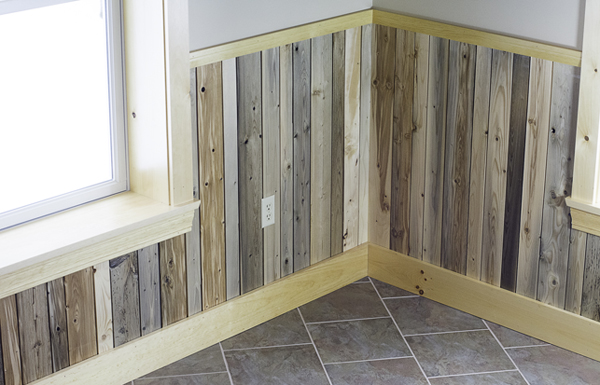
Shafer also points out that, in a sense, MHT’s products are actually “new” wood. The lumber isn’t “reclaimed” from razed buildings or other industrial applications where it could be covered with asbestos, lead paint or other toxins. River-bottom logs — much of which is first-growth timber — are producing boards for the first time.
But aside from its “green” approach to lumber manufacture, Maine Heritage Timber is also creating one-of-a-kind products. Waterlogged timber develops a unique array of hues and patinas that can’t be duplicated without the immersion stage or the passing of time. And, since MHT is a “low velocity” mill, Shafer says every log gets personal attention as it’s sawn into a variety of cants and applications.
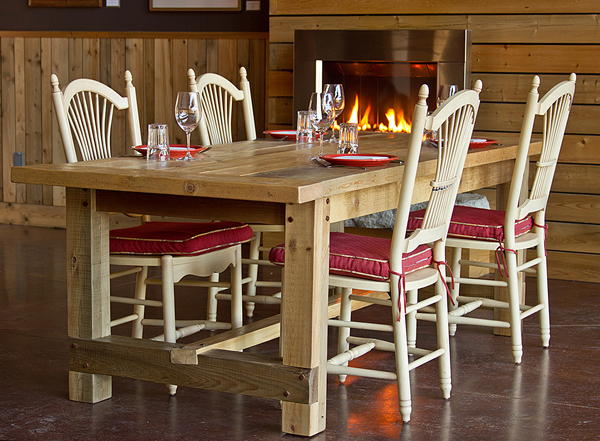
While he’s been asked by some woodworkers if Quakish Lake lumber is available for sale, and he’s sold some this way, Shafer says the company plans to continue using most of the yield for its own flooring and building products. Those are for sale on the company’s website.
It’s easy to see the lure of such unique, vintage material and why woodworkers would want to have an inventory of their own. “The hues and patinas cannot be duplicated by anyone … every piece is like buying a piece of history. And resurrecting this forgotten forest is our passion.”
Learn more about Maine Heritage Timber and its products by clicking here.
